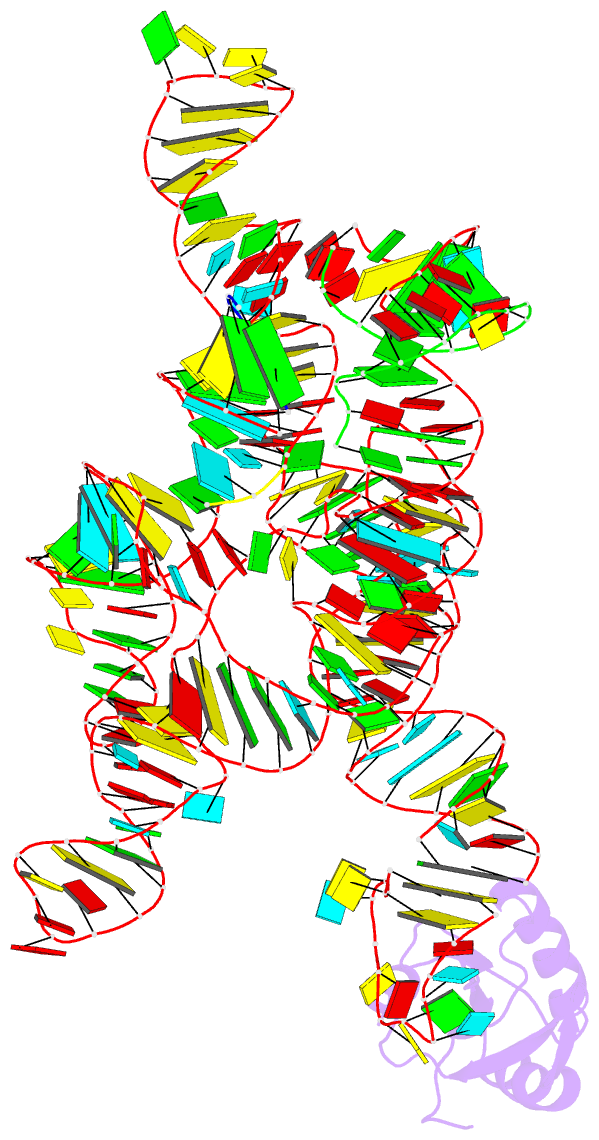Summary information and primary citation
- PDB-id
- 3bo2; SNAP-derived features in text and JSON formats;
DNAproDB
- Class
- nuclear protein-RNA
- Method
- X-ray (3.31 Å)
- Summary
- A relaxed active site following exon ligation by a group i intron
- Reference
- Lipchock SV, Strobel SA (2008): "A relaxed active site after exon ligation by the group I intron." Proc.Natl.Acad.Sci.Usa, 105, 5699-5704. doi: 10.1073/pnas.0712016105.
- Abstract
- During RNA maturation, the group I intron promotes two sequential phosphorotransfer reactions resulting in exon ligation and intron release. Here, we report the crystal structure of the intron in complex with spliced exons and two additional structures that examine the role of active-site metal ions during the second step of RNA splicing. These structures reveal a relaxed active site, in which direct metal coordination by the exons is lost after ligation, while other tertiary interactions are retained between the exon and the intron. Consistent with these structural observations, kinetic and thermodynamic measurements show that the scissile phosphate makes direct contact with metals in the ground state before exon ligation and in the transition state, but not after exon ligation. Despite no direct exonic interactions and even in the absence of the scissile phosphate, two metal ions remain bound within the active site. Together, these data suggest that release of the ligated exons from the intron is preceded by a change in substrate-metal coordination before tertiary hydrogen bonding contacts to the exons are broken.





